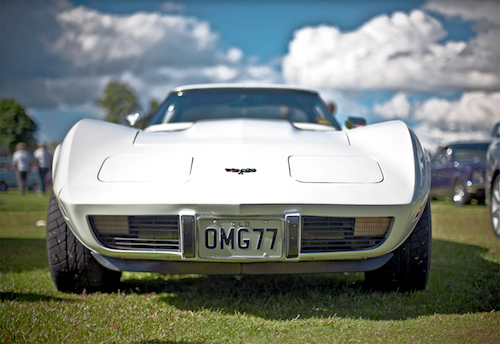License Plates are typically a random configuration of numbers and letters that our eyes barely register. But every once in a while, your eyes lock onto a license plate because even subconsciously, your mind connected the dots the driver was eagerly hoping you’d connect on their cheeky custom plate.
That’s what one driver was hoping would happen when she submitted the vanity plate “H-O-T-N-S-X-E” for approval at California’s Department of Motor Vehicles, according to a 2019 Los Angeles Magazine story. Her explanation for why she needed this message rather than an assigned one? “Myself, being a middle-aged woman,” was all she wrote on the application.
If you want to get a similarly fun and salacious story that will give your readers a chuckle, here are some tips to get started. Because while hard-hitting stories are the main duty of journalists, everyone could use a respite from the heavy and often negative news cycle.
How to collect license plate information in your state
The first step in your own “banned license plates” story is to file a public records request with your state’s department of motor vehicles asking them to provide you with all of the rejected vanity plates from the last 12 months.
You could go back further in time for more options, but keep in mind that California’s DMV receives about 20,000 vanity plate requests per month. That meant Los Angeles Magazine writer Samuel Braslow had to sift through thousands of banned plates from just a 12-month period for his story, he wrote. However, Alaska had less than 200 license plates rejected in the first seven months of 2017, according to the Anchorage Daily News. So take into account the size of your state before asking them to go back further than a year.
In your letter, here are five pieces of information you should consider requesting for your story:
- All rejected vanity plates going back 12 months
- The applicant’s explanation on their application for the proposed vanity plate
- DMV comments on why the vanity plate was rejected
- The vehicle make and model
- Statistics, including how many custom vanity plates are in your state, what percentage of cars in the state have a custom vanity plate, how many applications does the DMV receive each year, and how many applications are rejected per year
Once you’re armed with the fruits of your FOIA request, it’s time to think about how to mold it into a catchy story that readers will want to share over and over again with friends and family.
How to add color and human interest to your piece
This type of story is easy to add color to; simply pick out four to five particularly funny or clever license plates to highlight in your piece. You may also come across a rejected plate that had a unique or funny explanation from the driver as to why they wanted it. Or you might find yourself chuckling at the reasons the DMV lists for rejecting a plate. These can all add humor and human interest to the piece.
Another important piece to the story is the DMV’s rules on vanity plates. These are typically listed on the website and can help you and your readers understand why the DMV rejected the plates. For example, Alaska’s DMV rejects messages that they deem have “ethnic, racial, or vulgar connotations,” The Anchorage Daily News reported. And the California DMV rejects “any personalized license plate configuration that [carries] connotations offensive to good taste and decency,” according to Los Angeles Magazine.
This is also the time to add in statistics about how many cars in your state currently have an approved custom vanity plate, as well as how many applications they receive and reject per year, month, or day.
For example, Ohio has 500,000 drivers whose cars are currently sporting custom-vanity plates that were approved by the DMV, according to The Blade. And Alaska has 99,940 cars with custom-vanity plates, which works out to 11% of the state’s total registered vehicles.
How to add visuals to your story
The core of your story is based on the list of rejected license plates you receive, so it’s important to organize that in a way that’s easy to digest and pleasing to the reader’s eyes. Let’s take a look at a few options done by news publications in the past.
The best way to display the license plates visually is to use your graphic design skills to superimpose your favorite rejected phrases onto a template of your state’s license plate, as the Los Angeles Magazine did in its article. Not only does it look nice, but it also allows you to include additional information under each plate picture, such as the reason it was rejected, the driver’s explanation for wanting that particular phrase on their vanity plate, or the make and model of the car.
If you don’t have time to superimpose the messages, you could simply publish all of the vanity plates in a spreadsheet that’s linked in your article, as the Anchorage Daily News did in its 2017 article or as The Blade did in this 2019 article. This is easy for readers to skim through, but isn’t visually appealing.
Lastly, you could put all of the plates into a slideshow, as Arizona’s ABC15 did in its 2017 article. However, this becomes tedious to click through and there isn’t an accompanying article to explain Arizona’s license plates rules or why the DMV rejected these specific ones.
Since this is meant to be a fun article, it would be a good one for you to invest a little extra time into the visuals. Because reporters could use a quick break from writing about heavy topics just as much as readers could use a break from reading about them.











